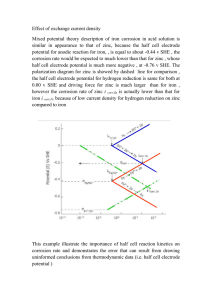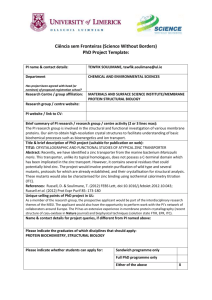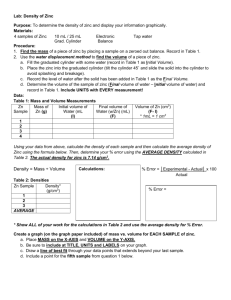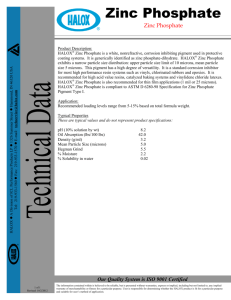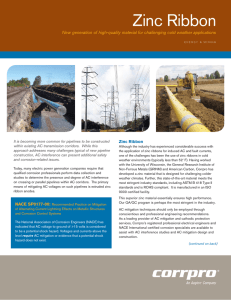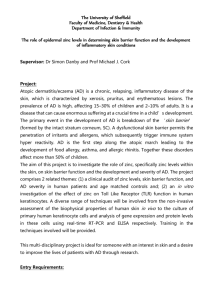Chemical Formula : Zn Chemical Name : Zinc Molecular Weight
advertisement
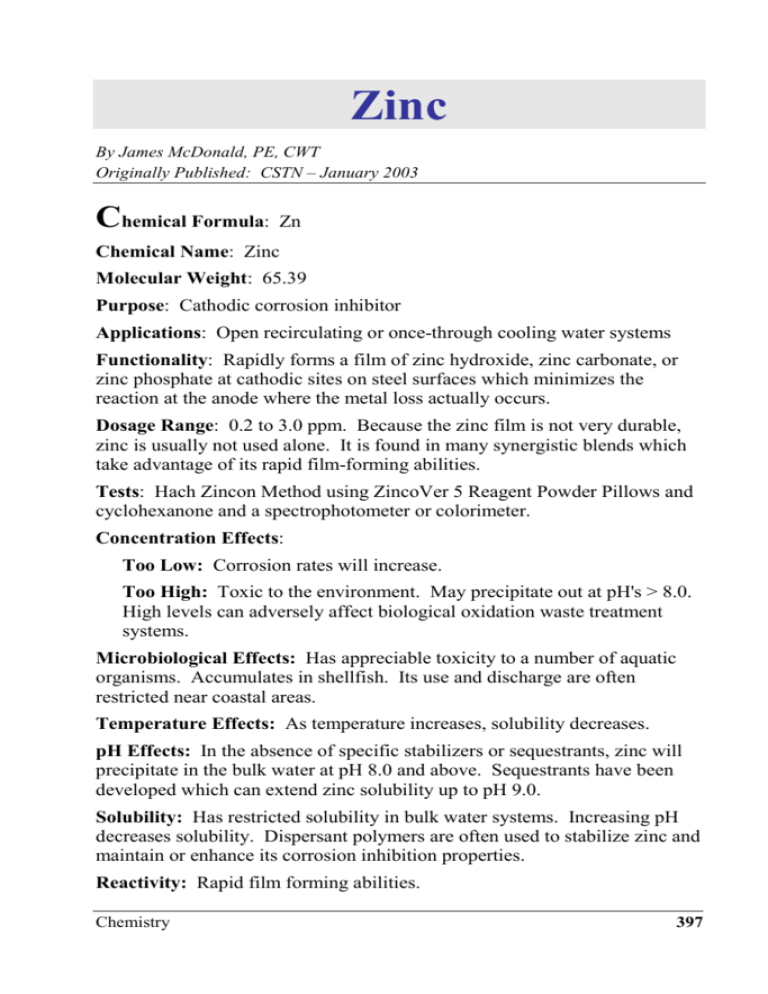
Zinc By James McDonald, PE, CWT Originally Published: CSTN – January 2003 Chemical Formula: Zn Chemical Name: Zinc Molecular Weight: 65.39 Purpose: Cathodic corrosion inhibitor Applications: Open recirculating or once-through cooling water systems Functionality: Rapidly forms a film of zinc hydroxide, zinc carbonate, or zinc phosphate at cathodic sites on steel surfaces which minimizes the reaction at the anode where the metal loss actually occurs. Dosage Range: 0.2 to 3.0 ppm. Because the zinc film is not very durable, zinc is usually not used alone. It is found in many synergistic blends which take advantage of its rapid film-forming abilities. Tests: Hach Zincon Method using ZincoVer 5 Reagent Powder Pillows and cyclohexanone and a spectrophotometer or colorimeter. Concentration Effects: Too Low: Corrosion rates will increase. Too High: Toxic to the environment. May precipitate out at pH's > 8.0. High levels can adversely affect biological oxidation waste treatment systems. Microbiological Effects: Has appreciable toxicity to a number of aquatic organisms. Accumulates in shellfish. Its use and discharge are often restricted near coastal areas. Temperature Effects: As temperature increases, solubility decreases. pH Effects: In the absence of specific stabilizers or sequestrants, zinc will precipitate in the bulk water at pH 8.0 and above. Sequestrants have been developed which can extend zinc solubility up to pH 9.0. Solubility: Has restricted solubility in bulk water systems. Increasing pH decreases solubility. Dispersant polymers are often used to stabilize zinc and maintain or enhance its corrosion inhibition properties. Reactivity: Rapid film forming abilities. Chemistry 397 Incompatibilities: High pH. Other Information: Synergistic with orthophosphate, polyphosphate, phosphonate, molybdate, sequestrants, polymers. Chemistry 398

